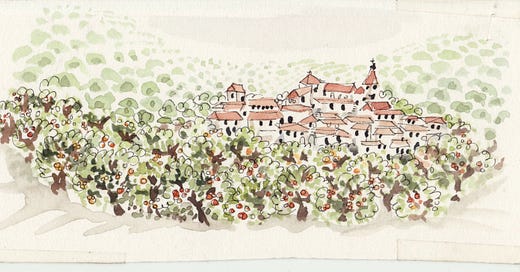The Spanish croqueta is an art best learned at mother’s knee (professional skills notwithstanding). Basic requirements are neat fingers, patience and the ability to fry coated foods without explosion in shallow oil in a raw iron pan set over a high heat. While implements are negotiable, the result is judged by the softness of the interior and the crispness of the coating. The basic filling is a flavoured bechamel, an indication of French origin. Egg-and-breadcrumbing, a way of making small amounts of expensive foodstuffs go further, is an oddity in the culinary traditions of the Spanish kitchen but also appears in the form of filete a la milanesa, “Milanese steak”, an indication of Italian origin. As with all questions involving authenticity, it’s complicated. However, Spain’s lengthy association with the Low Countries under the Hapsburgs might indicate a connection with the Belgian croquette - which, while considerably larger, remains popular enough in Belgium to be sold from snack-machines in the street.
Keep reading with a 7-day free trial
Subscribe to Elisabeth Luard's Cookstory to keep reading this post and get 7 days of free access to the full post archives.





